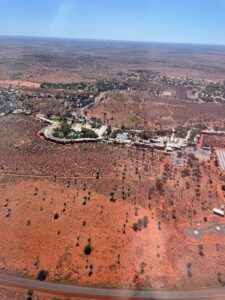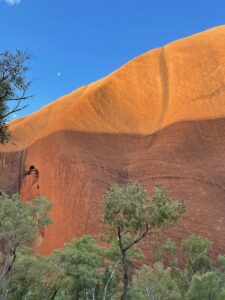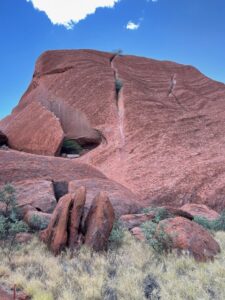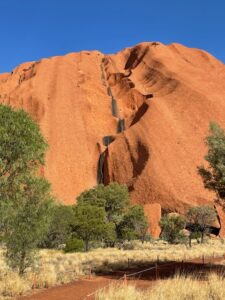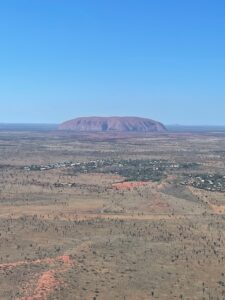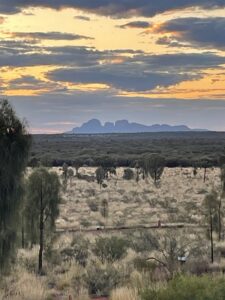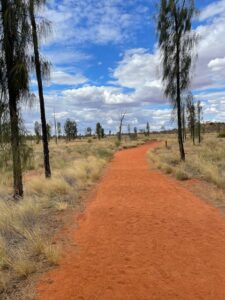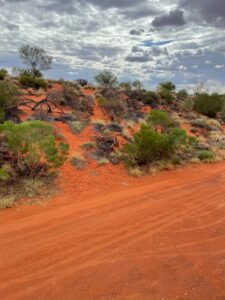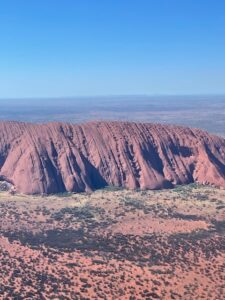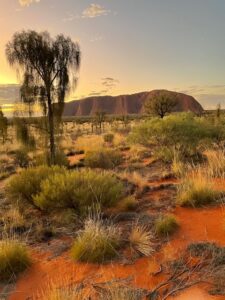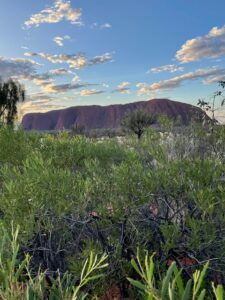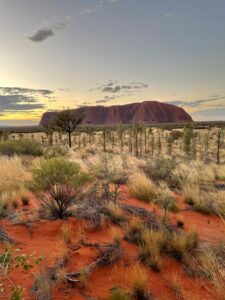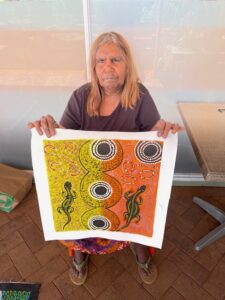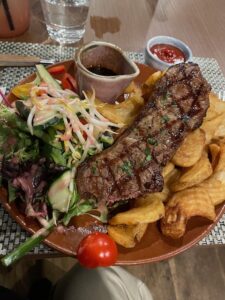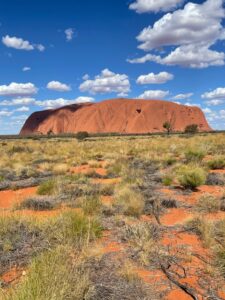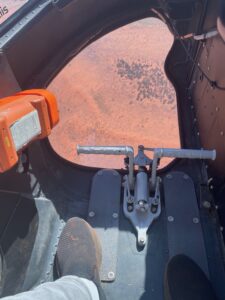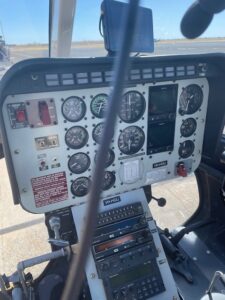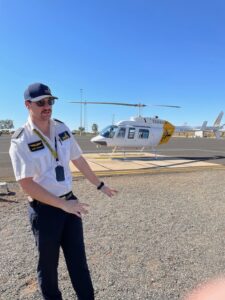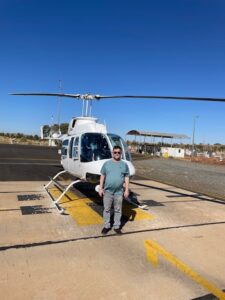Uluru
Uluru: Sacred Aboriginal Monolith
Date Visited: February 2023
Getting There
First you must get to a major Australian city. Then the only feasible way to travel is by plane. I took a direct flight from Sydney to Yulara, which is the name of the extremely small town near Uluru Rock where the airport is located. Jetstar offers the most flight options—and expect to pay at least $200 USD for a round trip, usually more. You could also fly to Alice Springs, which is about 300 km north of Uluru, but then you’d have to book a rather bumpy and arduous bus or jeep trip from there to Yulara. If you choose this second option, you would receive the side-benefit of experiencing endless miles of outback territory. I had limited time, so a direct flight was my best option.
What is Uluru?
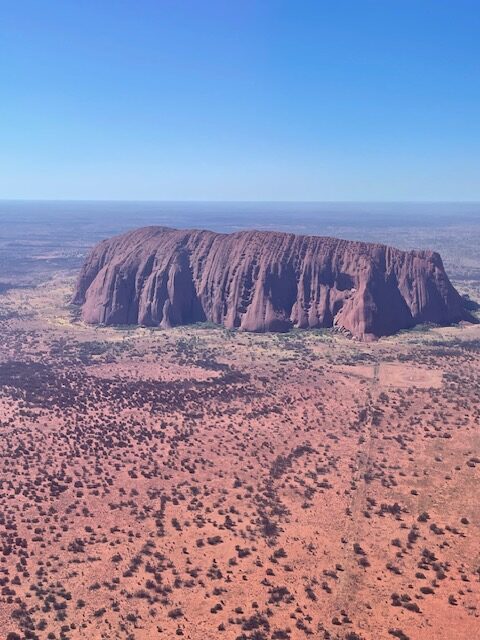
Uluru is a sacred sandstone monolith that rises about 350 meters above the outback plain, almost directly in the center of Australia. It is a massive formation, approximately 3.6 kilometers long and 1.9 kilometers wide. European colonists named it Ayers Rock, but very recently it has reverted back to its original indigenous name. On the one hand, it is one of the most dramatic natural features on the planet, but even more importantly it is perhaps the most sacred place in aboriginal culture, as it is among other things considered the resting place for past ancient spirits.
I have wanted to visit Uluru for many years because I have always considered it one of the 12 Natural Wonders of the World and most lists of this kind agree. Uluru is also a UNESCO World Heritage Site because of the cultural heritage of Australia’s indigenous people that have resided in the vicinity for over 10,000 years. So, for me, the visit to Uluru fulfilled a lifelong goal, making the expense and inconveniences of a trip to the middle of nowhere worth it to me.
When to go?
I was there in February, which is low season, with a bit fewer tourists. Why is it less crowded in Uluru in December through March? Because it’s usually incredibly HOT during these Australian summer months. Temperatures can reach 48C in the daytime. I was lucky—when I was there the temperature was about 38-40 degrees and I missed the 48C temperatures and local bush fires by about a week. Because of the low humidity, I found the weather when I was there to be reasonably comfortable, even when I went hiking. The peak tourist season is during the cool months of May-August, when the highs are 12-18C and you need to bring warm clothes. During the peak season, prices are higher, and you need to reserve your trip months in advance as everything at Uluru fills up quickly.
Lodging
Prices are extremely high for lodging, because of very limited supply, that is controlled by only one company, the Ayers Rock Resort. I stayed at Sails in the Desert, which is the premium hotel of the group, but it was only about $30 more per night than the budget options, which were still expensive. $150 per night USD is the minimum you’ll pay no matter the option you choose. If you are part of a large group, they do have an option where you can stay 6 in an apartment, which would reduce your cost per person.
Amenities

The Ayers Rock Resort is a little community with several hotels, a multitude of eating establishments, dozens of tourist shops, an art museum, post office, grocery store, and several tour services. To save money, shop at the IGA Grocery Store, for your breakfast and lunch needs (milk, juice, fruit, bread, etc).
Caveats
It’s damn hot there in the summer, so drink plenty of water when you’re outside to prevent dehydration. Pale people like me definitely need to wear lots of sunscreen. I saw the victim of sunburn in my hotel lobby, redder than a ripe strawberry, whining in pain—she had decided she didn’t need sunscreen and paid a terrible price.
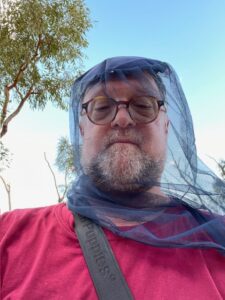
If you plan to go on a hiking/outdoor tour, purchase a hat with netting to keep the black flies off your face. They are ruthless and travel in great swarms; there were two people on my hiking tour around Uluru who didn’t have netting and they spent the entire trip in misery waving their arms constantly to keep the flies off their faces.
Yulara, where the hotel is located, is outside Uluru National Park. If you book a tour to Uluru Rock itself, you need to go online to purchase a National Park Pass in advance, or you won’t be admitted into the park, and you’ll be stuck at the entrance and will have to trudge 7 km back to the Ayers Rock Resort.
What to see?

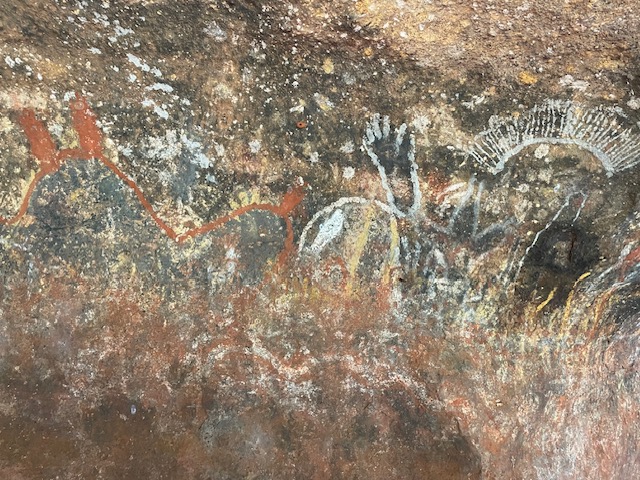
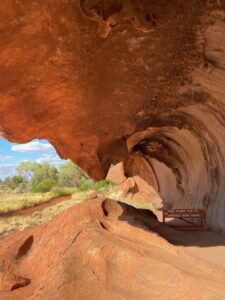
There are several tour companies located in the resort and online. I would recommend booking in advance as many tours are full a day or two before they occur. There is such a variety of options, it really depends on your tastes. I only had a couple days at Uluru, so I had limited possibilities. I chose one of the many tours where you could visit four or five strategic sights all around the base of Uluru. The tour I chose included a visit to some cave paintings, a hike through a picturesque canyon, a hike to a special indigenous water hole, a stop at the National Park Museum, and a final stop at a special viewing point near Uluru where we could witness the sunset while being served champagne and hors d’oeuvres.
The second tour I selected was a helicopter flight over Uluru. Pricey but incredibly dramatic and well worth it for a once-in-a-lifetime experience.

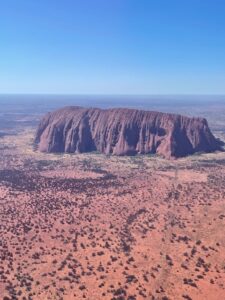
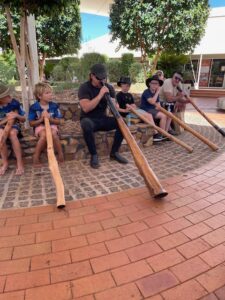
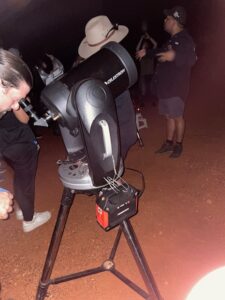
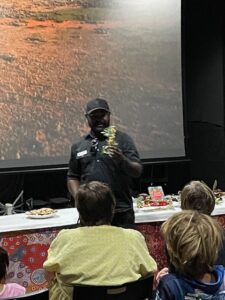
Also, the Ayers Rock Resort offers lots of cool seminars. I attended three: a seminar on indigenous foods and plants, a stargazing expedition, and a digeridoo (a large aboriginal musical instrument) lesson.
Should you go?
I am strange person who’s been interested in Uluru since I was a child, so the answer from my perspective is a definite yes. For most normal people, I wouldn’t recommend a special trip to Australia just to see Uluru, but if you happen to be in Melbourne or Sydney for an extended period, then a side trip to Uluru might be a great experience if you want to learn about aboriginal culture, see one of the World’s 12 Greatest Natural Wonders, and get a feel for the outback, which possesses a unique and magical vibe.
Gallery
